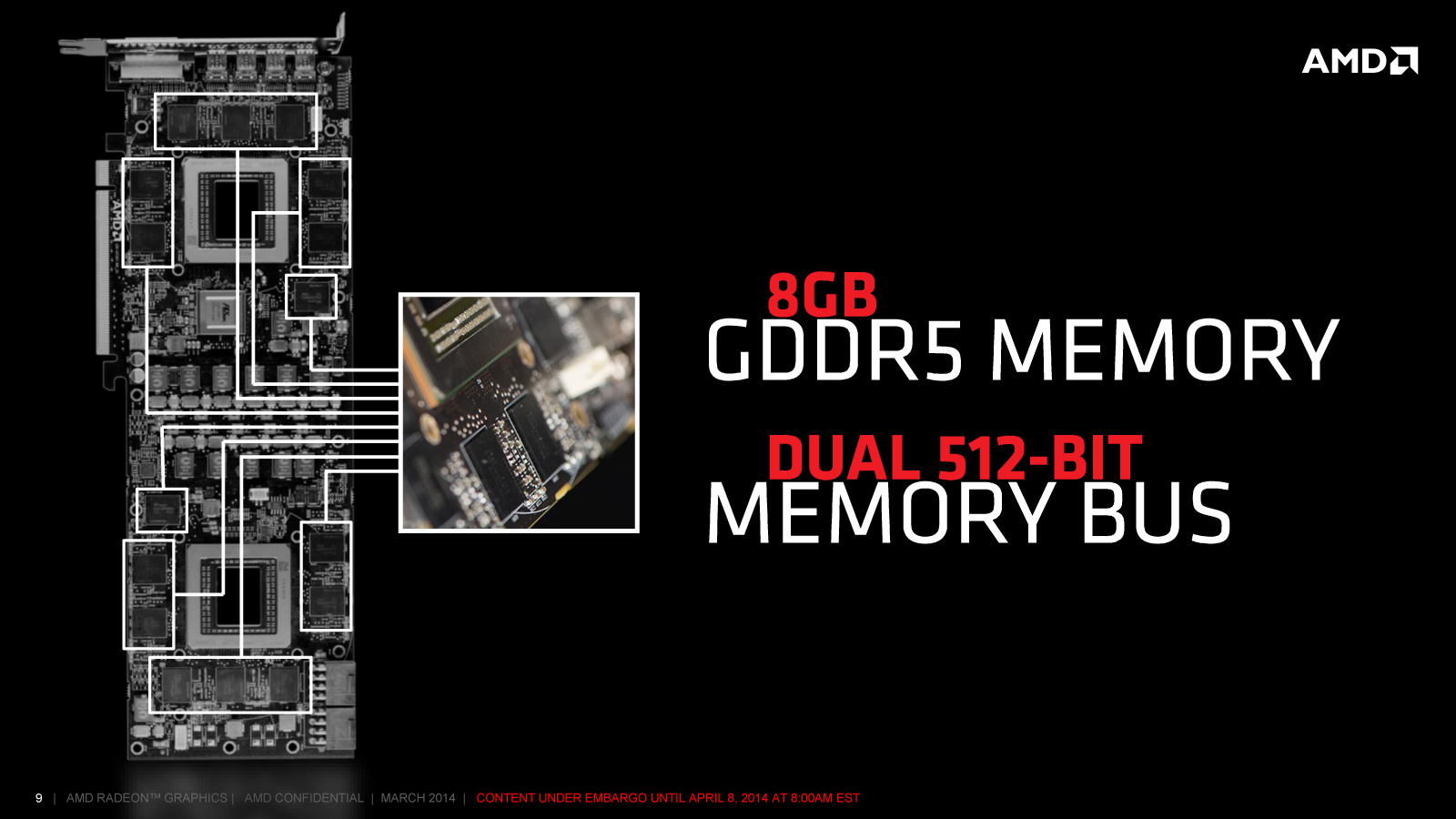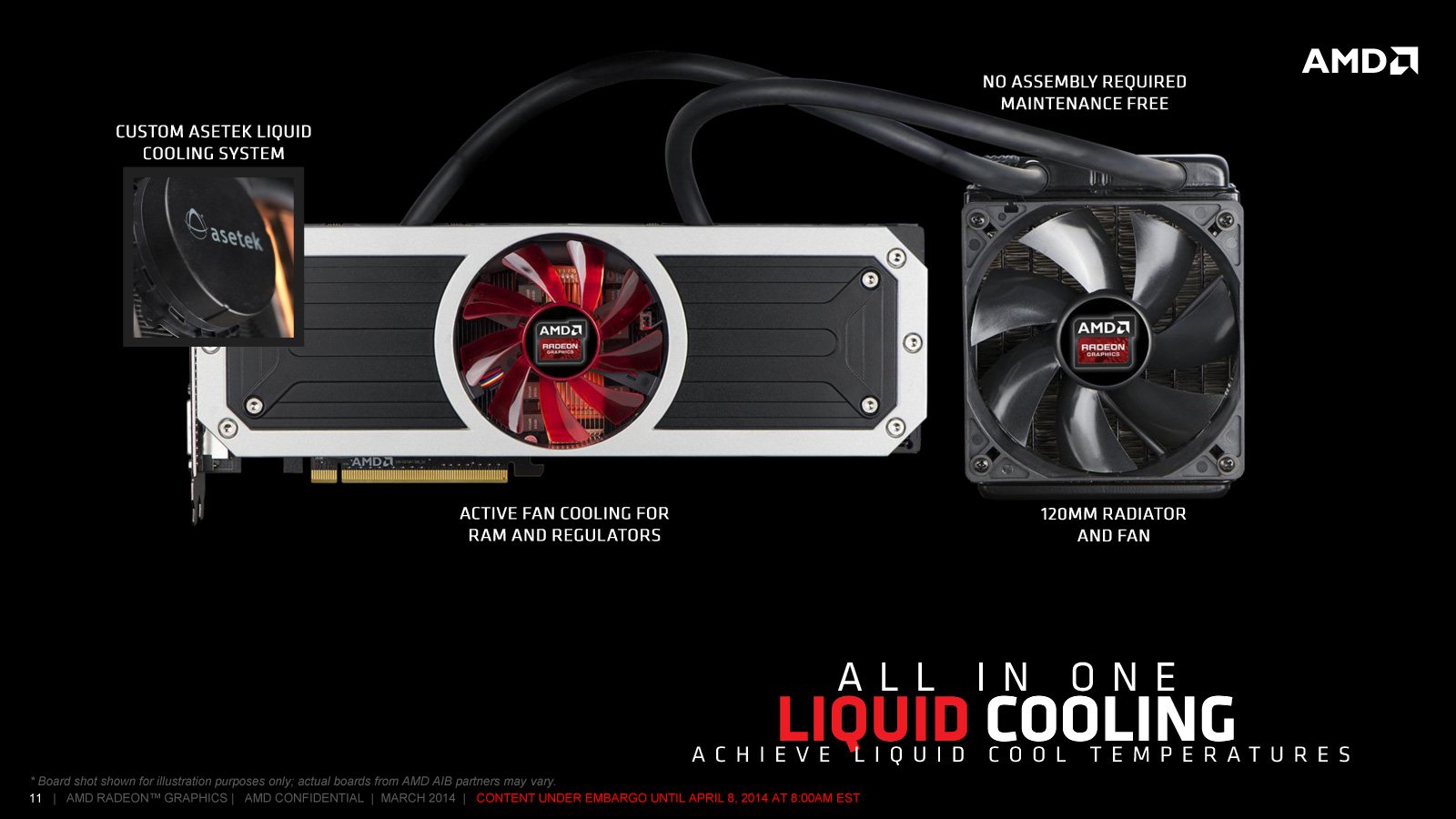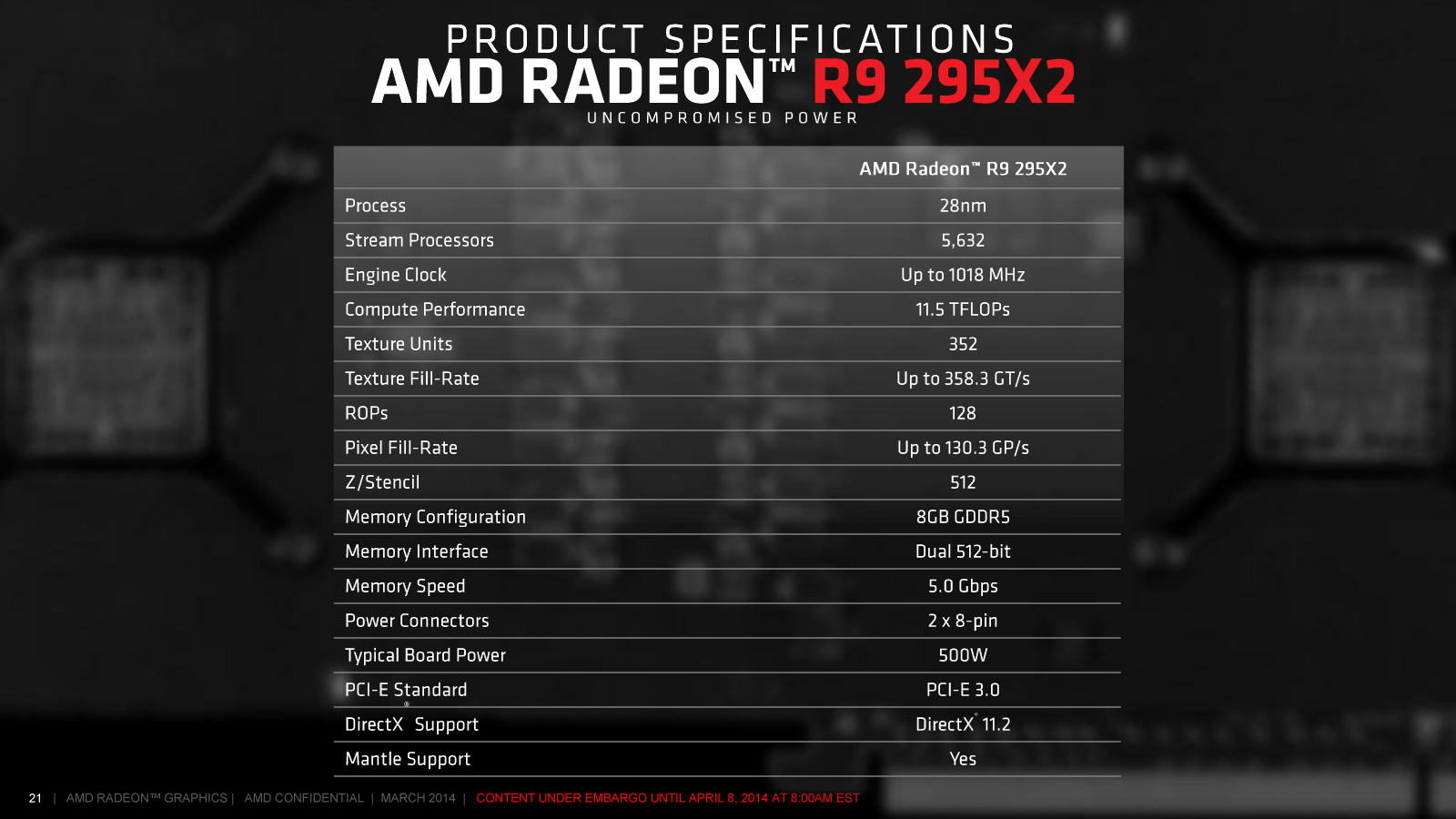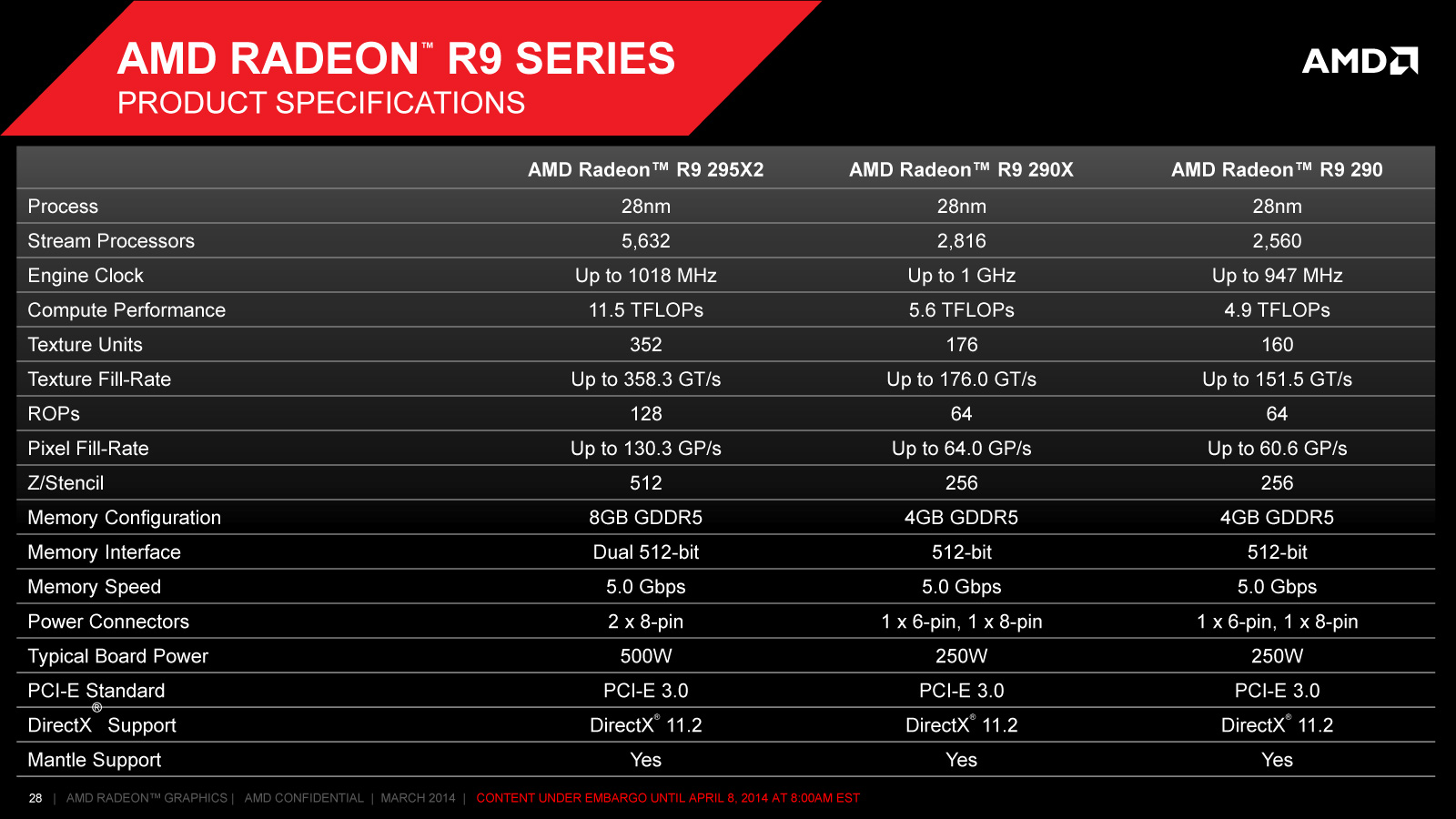AMD Radeon R295X2 Launch
On April 21, 2014, AMD will launch the newest R9 GPU, the R9 295X2 - a factory water cooled dual slot card. AMD launched the R9 and R7 series of graphics cards in late September 2013. The new series were largely rebrands of the previous generation, with only slight upgrades to the Radeon HD 7000 series. The two truly new cards were the Radeon R9 290 and the R9 290X.
Both of these new cards were based on the new "Hawaii" chip. In addition to increased performance, they also brought new features such as TrueAudio, Mantle, DX 11.2, and the new bridge-free XDMA CrossFire.
While the cards offered noticeable performance improvements over the previous top-end Radeon HD 7970 cards, the R9 290 (the X in particular) didn't offer the power, heat and noise profiles that gamers were expecting. After-market cooling solutions developed by AMD's partners solved much of the heat and noise problems, and offered a more well rounded package than the original AMD reference design.
The launch of the AMD R9 295X2 comes just seven months after the release of the original R9 290 and R9 290X. This is a quick turn around for an "X2" card, and offers full dual performance of the top-end R9 290X chip. It offers the full number of stream processors, and actually a slightly higher clock speed than the R9 290X.


Previous dual-GPU cards from AMD (Radeon HD 5970, 6990 and 7990) offered clock speeds that were closer to the second chip in the product stack, such as the HD 5850, HD 6950 and HD 7970 (non GHZ edition), rather than the premier chip in each product line.
The R9 295X2 offers the full compliment of stream processors found in two Radeon R9 290X cards, and actually pulls a slightly higher clockspeed than the R9 290X - thanks to the integrated closed loop water cooling.


AMD claims that the R9 295X2 water cooling solution will fix the heat and noise issues that plagued the original cards, in addition to offering the bump in speed. The slides below lend credence to AMD's accomplishment with the card specs.
The card does pull a total of 500W, and requires a 2x8-pin connection from your power supply. The power supply requirements are actually pretty stiff, with each 8-pin connector needing to provide 28A of +12V current.
AMD has designed the card to weight the current draw towards the PCI-e power (molex) connectors, and away from the PCI-e slot itself. The goal was to place the burden on the high-quality power supply, and avoid issues of burned slots from too much power draw.


AMD's marketing slogan for this card is "Do You Have What It Takes?". This goes beyond just the $1,499 price tag - it carries through to your entire system.
Do you have a case that can accept the 120mm radiator, and do you know how to install it? Do you have a beefy, quality power supply that will support the card's unique requirements. And lastly, do you have the Eyefinity or 4k UHD display that need this much horsepower?
We do not yet have a review sample, to find out if we're truly worthy (though we do have Eyefinity and 4k UHD). While we continue to plug along and test the cards we have on hand, we recommend you jump over to HardOCP and read their review.